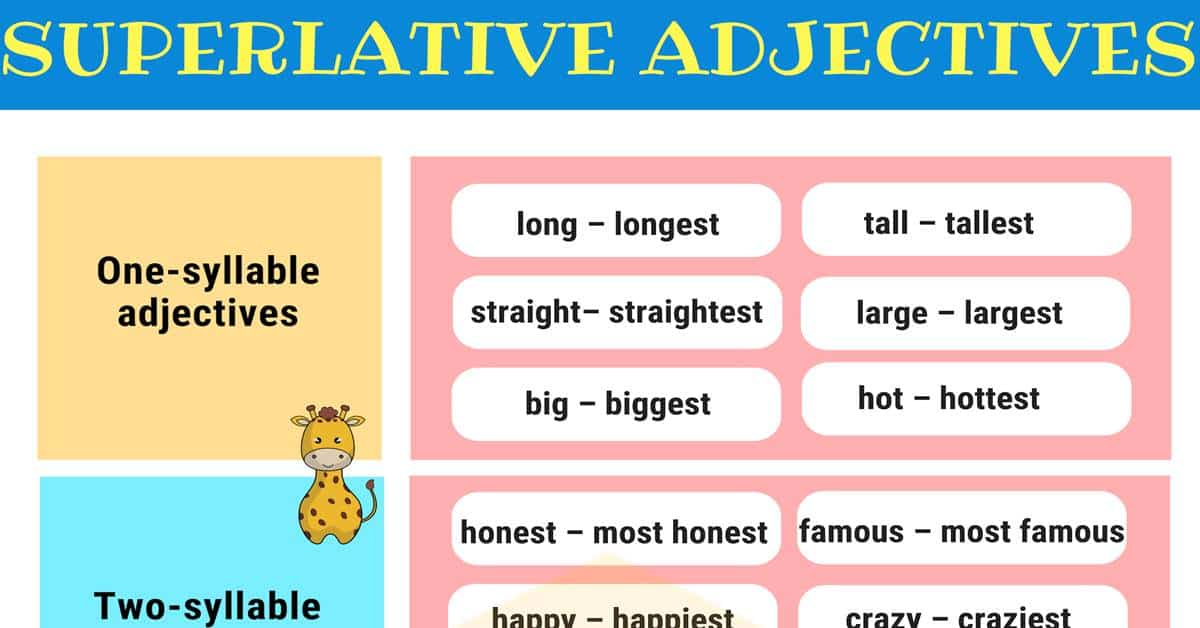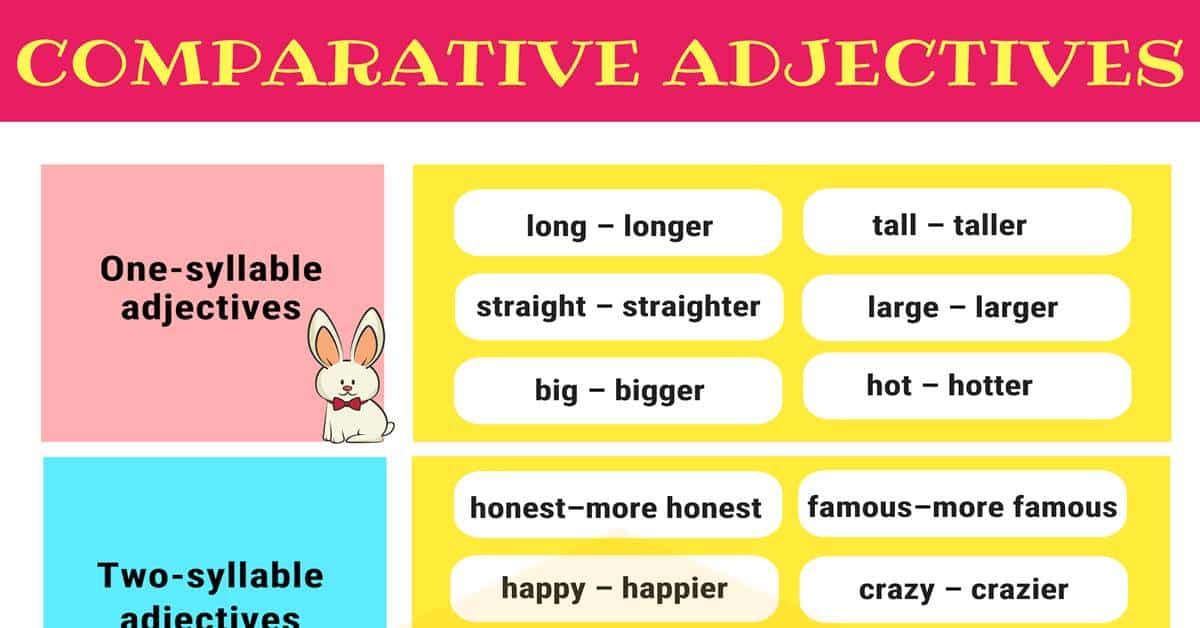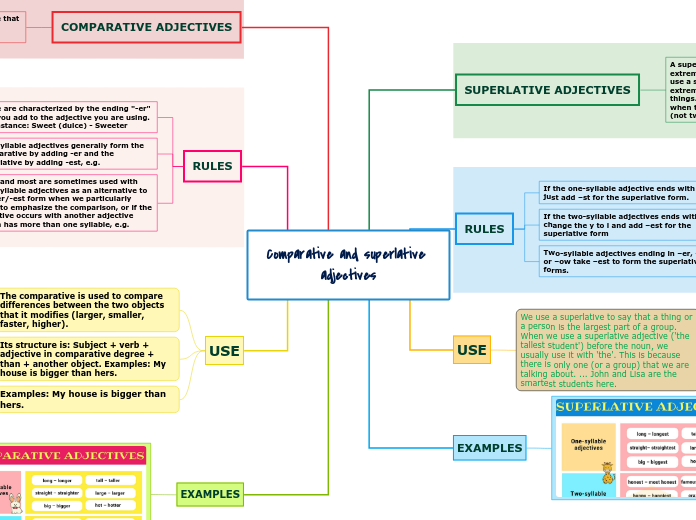Comparative and superlative adjectives
SUPERLATIVE ADJECTIVES
A superlative adjective expresses the extreme or highest degree of a quality. We use a superlative adjective to describe the extreme quality of one thing in a group of things. We can use superlative adjectives when talking about three or more things (not two things).
RULES
If the one-syllable adjective ends with an e, just add –st for the superlative form.
If the two-syllable adjectives ends with –y, change the y to i and add –est for the superlative form
Two-syllable adjectives ending in –er, –le, or –ow take –est to form the superlative forms.
USE
We use a superlative to say that a thing or a person is the largest part of a group. When we use a superlative adjective ('the tallest student') before the noun, we usually use it with 'the'. This is because there is only one (or a group) that we are talking about. ... John and Lisa are the smartest students here.
EXAMPLES

COMPARATIVE ADJECTIVES
A comparative adjective is an adjective that expresses a comparison of qualities between two elements.
RULES
These are characterized by the ending "-er" that you add to the adjective you are using. For instance: Sweet (dulce) - Sweeter
One syllable adjectives generally form the comparative by adding -er and the superlative by adding -est, e.g.
More and most are sometimes used with one-syllable adjectives as an alternative to the -er/-est form when we particularly want to emphasize the comparison, or if the adjective occurs with another adjective which has more than one syllable, e.g.
USE
The comparative is used to compare differences between the two objects that it modifies (larger, smaller, faster, higher).
Its structure is: Subject + verb + adjective in comparative degree + than + another object. Examples: My house is bigger than hers.
Examples: My house is bigger than hers.
EXAMPLES

